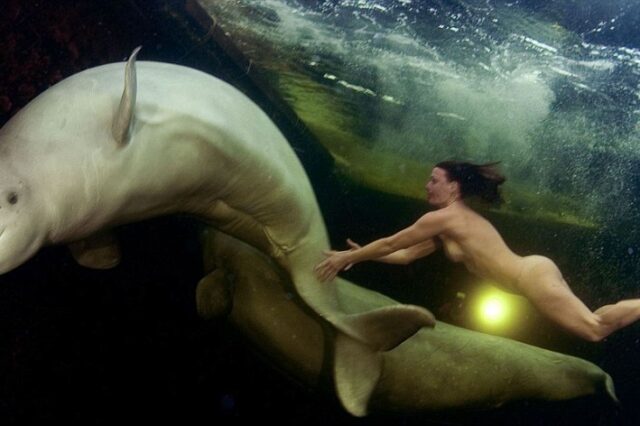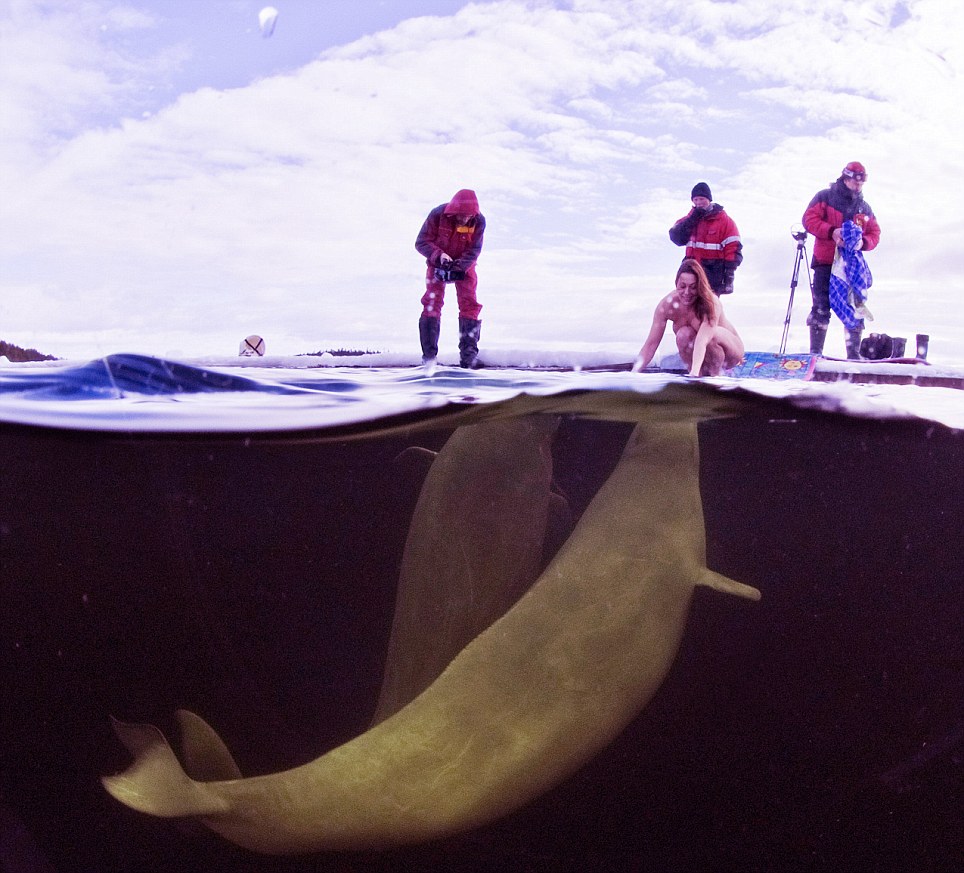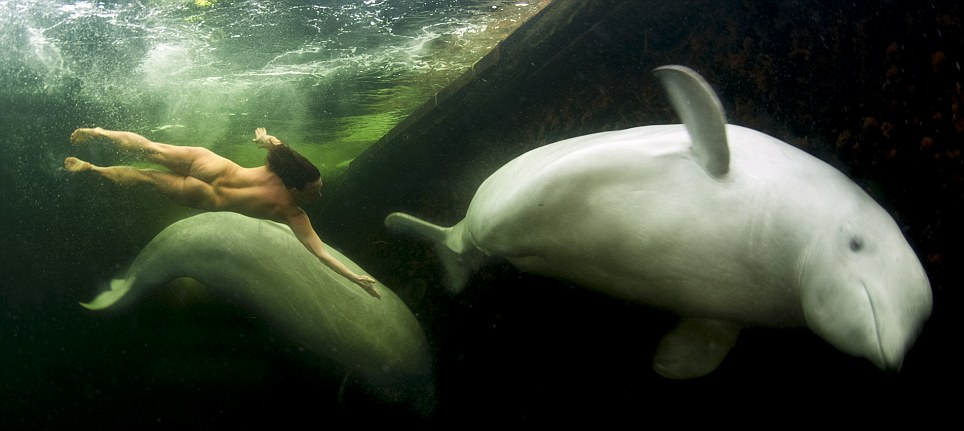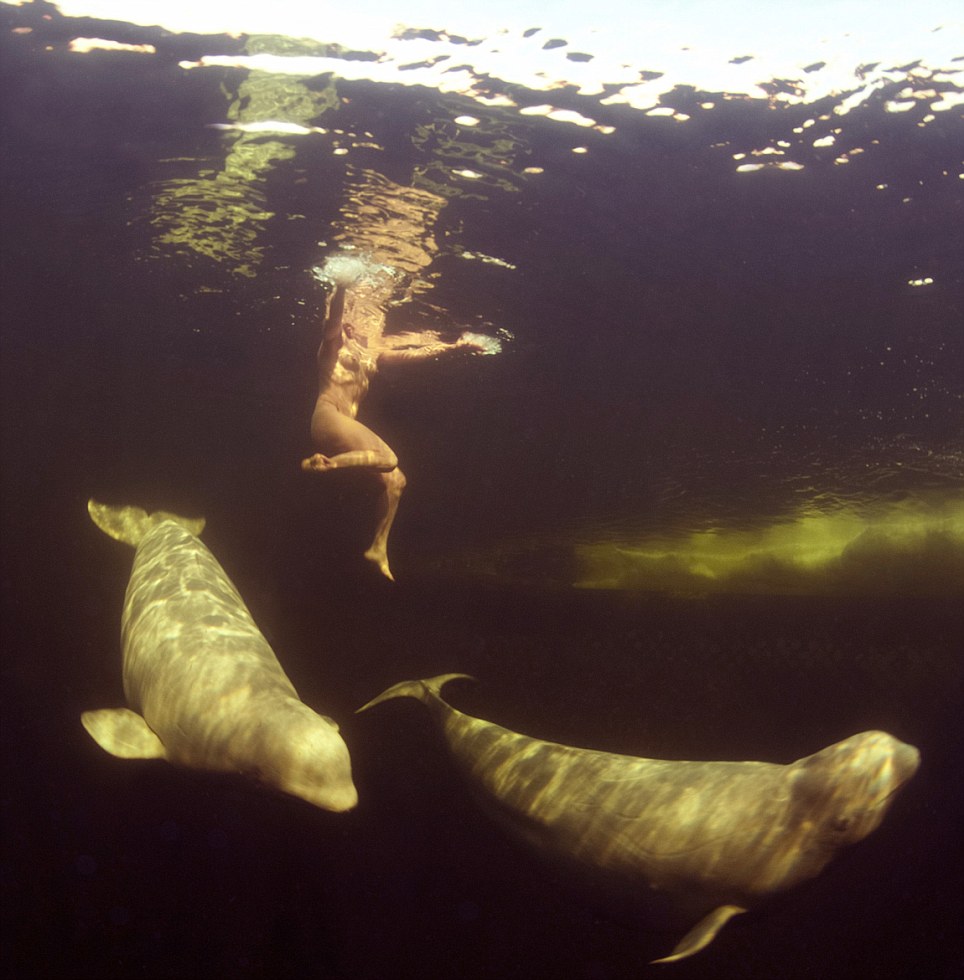H Ρωσίδα που δεν καταλαβαίνει από κρύο

Ένα με τις φάλαινες έγινε μια Ρωσίδα δύτρια που έπεσε γυμνή στη θάλασσα αψηφώντας το πολικό ψύχος των παγωμένων νερών για να καταγράψει τη συμπεριφορά των φαλαινών σε τέτοιες συνθήκες με έναν άνθρωπο (Pics)
- 16 Ιουνίου 2011 07:42
Θυσία για την επιστήμη και τις φάλαινες έγινε η 36χρονη Ρωσίδα Natalia Avseenko η οποία αψηφώντας το πολικό ψύχος και τους -1,5 βαθμούς Κελσίου της παγωμένης θάλασσας στην περιοχή Murmansk Oblast στην ακτή της Λευκής Θάλασσας κοντά στον Αρκτικό Κύκλο αποφάσισε να γδυθεί και να πέσει στο νερό.
Ο μέσος άνθρωπος θα μπορούσε να είχε πεθάνει εάν βρισκόταν για περισσότερο από πέντε λεπτά γυμνός σε πολικές θερμοκρασίες, ωστόσο η Ρωσίδα δύτρια χρησιμοποιώντας τεχνικές διαλογισμού για να κρατά την αναπνοή της κατάφερε να παραμείνει κάτω από το νερό δέκα λεπτά και σαράντα δευτερόλεπτα χρονική περίοδο που έγινε ένα με τις φάλαινες.
Έτσι οι επιστήμονες κατάφεραν να δουν τη συμπεριφορά τους όταν συνυπάρχουν με έναν άνθρωπο σε τέτοιες συνθήκες. Τονίζεται ότι κολυμπούν ελεύθερες περίπου 100.000 φάλαινες καθώς η φαλαινοθηρία έχει σκοτώσει πολλές από αυτές.










































